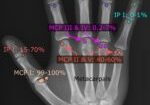Las mejores formas de obtener CEU de terapia ocupacional en línea
archivado en Sin categoría
Introducción a las CEU de Terapia Ocupacional
Mantenerse colegiado y actualizado en el campo de la terapia ocupacional no es opcional, sino un requisito profesional. Aquí es donde entran en juego las Unidades de Educación Continua (CEU). Estos créditos de aprendizaje esenciales ayudan a los terapeutas ocupacionales a mantener su licencia, ampliar su experiencia y mantenerse al día con las últimas prácticas basadas en la evidencia.
¿Qué son las Unidades de Educación Continua (CEU)?
Los CEU son unidades estandarizadas que se utilizan para medir la participación en actividades de formación profesional. Para los terapeutas ocupacionales, cada CEU generalmente equivale a 10 horas de clase presencial. Estos son requeridos por las juntas estatales de licencias y la Junta Nacional de Certificación en Terapia Ocupacional (NBCOT).
Por qué las CEU son cruciales para los terapeutas ocupacionales
Sin completar los CEU, los terapeutas ocupacionales corren el riesgo de perder su licencia para ejercer. Pero más allá del cumplimiento legal, los CEU les permiten:
- Manténgase actualizado sobre las nuevas técnicas de tratamiento.
- Mejorar los resultados de los pacientes
- Profundizar conocimientos en especialidades como pediatría, geriatría o neurología.
- Avanzar en sus carreras o calificar para promociones

Beneficios de obtener CEU en línea
El aprendizaje en línea ha revolucionado la forma en que los terapeutas ocupacionales obtienen CEU. Atrás quedaron los viajes a talleres o conferencias. Ahora, todo es accesible desde tu portátil o smartphone.
Conveniencia y flexibilidad
La ventaja más importante es que puedes aprender según tu horario. Ya sea que estés almorzando o relajándote después del trabajo, los CEU en línea se adaptan a tu rutina: sin desplazamientos ni tiempo libre.
Rentabilidad en comparación con las clases presenciales
Los proveedores de CEU en línea suelen ofrecer suscripciones mensuales o anuales, lo que las hace más asequibles a largo plazo. Sin estancias de hotel, gastos de viaje ni cenas fuera: solo aprendizaje.
Acceso a temas y cursos especializados
Muchas plataformas en línea ofrecen temas especializados que no encontrarás en un seminario local. Desde terapia de integración sensorial hasta ética de la telesalud, los CEU en línea te ofrecen variedad y profundidad.
Acreditación y Cumplimiento
Cómo garantizar que un proveedor de CEU en línea esté aprobado
Compruebe siempre si la plataforma está Aprobado por la AOTA o reconocido por su junta estatal de licenciasLa mayoría de los sitios web con buena reputación muestran claramente sus acreditaciones en las páginas de los cursos.
Requisitos de licencia estatal que debe conocer
Cada estado tiene normas diferentes. Por ejemplo:
- California requiere que los cursos sean aprobados por la Junta de Terapia Ocupacional de California (CBOT).
- Texas acepta cursos de proveedores aprobados por AOTA.
Consejo profesional: Marque como favorito el sitio web de la junta de TO de su estado para mantenerse actualizado.
Cómo elegir el curso adecuado
Evaluación del contenido del curso
No te limites a leer el título; lee los objetivos del curso. ¿Son relevantes para tu puesto o tus objetivos actuales? ¿Te aportarán retos y te capacitarán?
Comprobación de las credenciales del instructor
Busque instructores con experiencia clínica práctica y certificaciones reconocidas. Un instructor bien calificado aporta credibilidad y calidad.
Cómo adaptar las CEU a sus objetivos profesionales
Si trabajas en pediatría, un curso de terapia ocupacional geriátrica podría no ser útil para tu práctica inmediata. Selecciona cursos que se ajusten a tu trayectoria profesional.
Modelos de costos y suscripción
Cursos CEU gratuitos vs. de pago
Si bien algunas plataformas en línea ofrecen cursos CEU gratuitos, a menudo tienen limitaciones como:
- Menos temas avanzados
- Acceso limitado a los certificados de finalización
- Actualizaciones menos frecuentes del material del curso
Por otro lado, las plataformas de CEU de pago ofrecen aprendizaje estructurado, contenido actualizado y una gama más amplia de temas. Además, es más probable obtener certificados de inmediato, lo cual es importante para la documentación y el cumplimiento normativo.
Suscripciones anuales vs. pago por curso
Algunos modelos de precios populares incluyen:
- Suscripciones anuales CEU ilimitados por una tarifa anual fija. Ideal para terapeutas que planean tomar varios cursos. Haz clic. AQUÍ para ver todos los niveles de membresía de Hand Therapy Academy.
- Pago por curso Ideal para quienes solo necesitan unas pocas CEU para cumplir con los requisitos de renovación. Aquí está la lista completa. Cursos CEU con acceso de por vida.
Consejos para mantenerse organizado y en cumplimiento
Seguimiento eficiente de sus CEU
Mantenga un registro digital o físico de:
- Nombres de los cursos
- Fechas de finalización
- Número de CEU obtenidos
- ID de aprobación del proveedor
Aplicaciones como Corredor de CE Puede registrar automáticamente sus CEU en los estados participantes.
Cómo evitar los errores más comunes en las licencias
- Plazos incumplidos para renovación de licencia
- Tomar cursos no aprobados
- No conservar la documentación para auditorías
Adquiera el hábito de verificar sus fechas límite de licencia anualmente y establezca recordatorios con al menos 30 días de anticipación.
Requisitos técnicos y formatos de aprendizaje
Aprendizaje basado en vídeo, interactivo y texto
Los formatos de CEU en línea varían:
- videoconferencias Ofrecen una sensación de aprendizaje más tradicional.
- Simulaciones interactivas Ayuda con el compromiso.
- Módulos basados en texto Adecuado para aquellos que prefieren leer a su propio ritmo.
Elige el formato que mejor se adapte a tu estilo de aprendizaje.
Compatibilidad con dispositivos móviles y de escritorio
La mayoría de las plataformas son compatibles con dispositivos móviles, lo que le permite:
- Mira los cursos sobre la marcha
- Descargar materiales sin conexión
- Sincronizar el progreso entre dispositivos
Asegúrese de que el proveedor admita los dispositivos que planea utilizar.
Preguntas frecuentes
1. ¿Cuántos CEU necesito por año como OT?
La mayoría de los estados requieren 12–36 CEU Cada 1 a 3 años. Confirme siempre con su junta estatal.
2. ¿Los CEU en línea son aceptados por todos los estados?
Sí, si el proveedor es aprobado por el estado o Acreditado por la AOTA. Siempre verifique la política de CEU de su estado.
3. ¿Puedo completar todos los CEU en línea?
En muchos estados, sí. Sin embargo, algunos requieren una combinación de CEU presenciales y en línea. Lea atentamente los requisitos de su licencia.
4. ¿Cómo sé si un proveedor de CEU es legítimo?
Buscar:
- Aprobación de la AOTA
- Reconocimiento de la junta estatal
- Esquemas de cursos transparentes y biografías de los instructores
5. ¿Cuál es la mejor plataforma para obtener CEU asequibles?
HandTherapyAcademy.com Ofrece diferentes niveles de membresía, así como cursos individuales, y es uno de los favoritos entre los terapeutas tanto por su costo como por su variedad de contenido.
Conclusión: Mantenga su licencia activa y sus habilidades al día
La educación continua no es solo una formalidad legal: es una oportunidad para crecer, mantenerse relevante y brindar una atención de primer nivel a sus clientes. Con CEU de terapia ocupacional en líneaPuede cumplir con los requisitos de su licencia según su horario, a su ritmo y, a menudo, a un costo menor que las clases presenciales.
No espere a que las fechas límite se acerquen sigilosamente: comience a explorar las plataformas de CEU hoy mismo y tome el control de su desarrollo profesional.
Más para leer
¿Cuándo se debe utilizar una férula estática progresiva en la terapia de mano?
Flores, K. (2002). Una jerarquía de decisión propuesta para ferulizar la articulación rígida, con énfasis en los parámetros de aplicación de fuerza. Revista de terapia de manos, 15, 158-162. The Skinny- El artículo propone una jerarquía de decisiones para determinar cuándo se debe aplicar una órtesis estática progresiva o dinámica. La jerarquía de decisiones utiliza una prueba de semanas modificada (MWT). El…
Leer másDolor de pilar después de la cirugía de liberación del túnel carpiano
Dolor del pilar después de la cirugía de liberación del túnel carpiano La cirugía de liberación del túnel carpiano (CTR) es un procedimiento común y la mayoría de los pacientes experimentan satisfacción con sus resultados. Sin embargo, para algunas personas, puede surgir una complicación temporal conocida como “dolor de pilar”, que afecta aproximadamente al 13% de los que se someten a CTR. El dolor del pilar se manifiesta en la eminencia tenar e hipotenar...
Leer másHuesos Sesamoideos: ¿Qué son y para qué sirven?
Por Brittany Carrie La perspectiva de un estudiante Durante las primeras semanas de mi rotación, estuve expuesta a muchas cosas nuevas y emocionantes a las que no había estado expuesta en el salón de clases. Observé y ayudé a tratar a pacientes que habían sufrido traumatismos graves desde tendones lacerantes hasta amputaciones completas, vi diferentes técnicas de entablillado,…
Leer másIntervenciones de terapia de mano para lesiones y afecciones de las extremidades superiores distales
Takata, SC, Wade, ET y Roll, SC (2019). Intervenciones, resultados y diagnósticos de terapia de manos evaluados durante los últimos 10 años: una revisión de mapeo que vincula la investigación con la práctica. Revista de terapia de manos, 32 (1), 1–9. Escrito por Brittany Carrie The Skinny Aproximadamente 26,9% de lesiones y trastornos ortopédicos de las extremidades superiores ocurren en todo el mundo. Las lesiones son la mayoría...
Leer más¡Regístrese para recibir actualizaciones directamente en su bandeja de entrada!
Regístrese con nosotros y le enviaremos publicaciones periódicas en el blog sobre todo lo relacionado con la terapia de manos, avisos cada vez que subamos nuevos videos y tutoriales, junto con folletos, protocolos y otra información útil.






